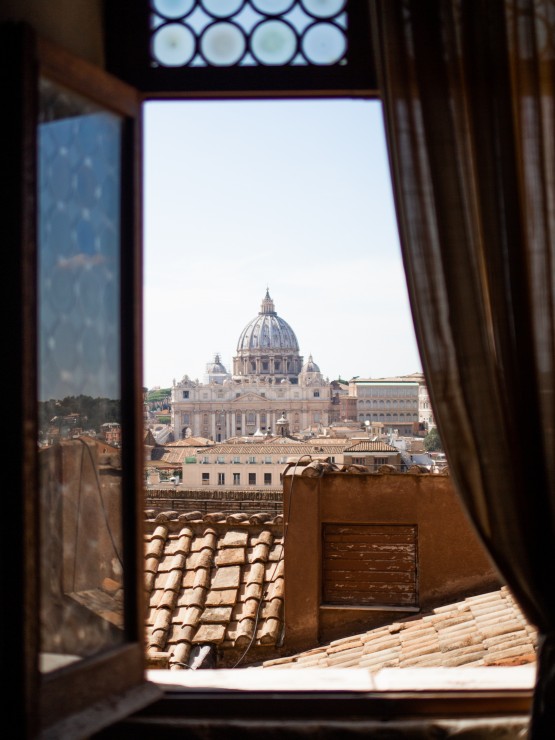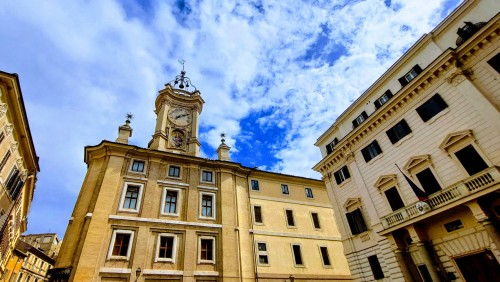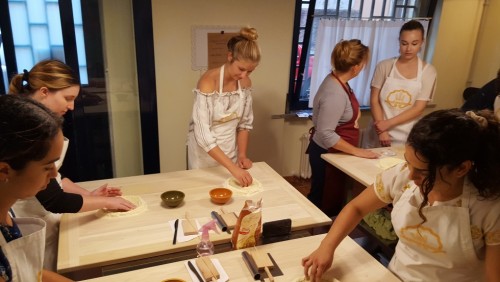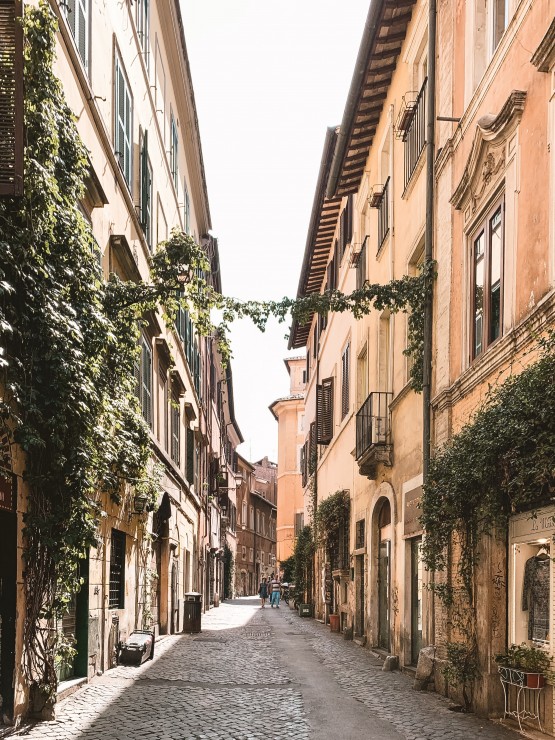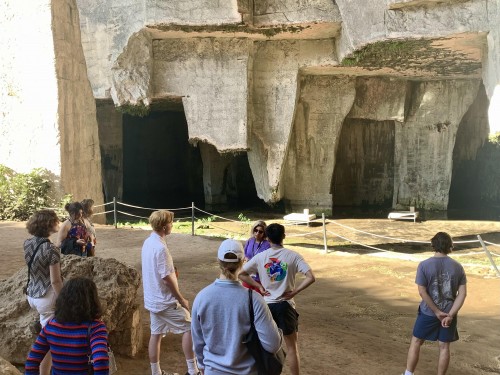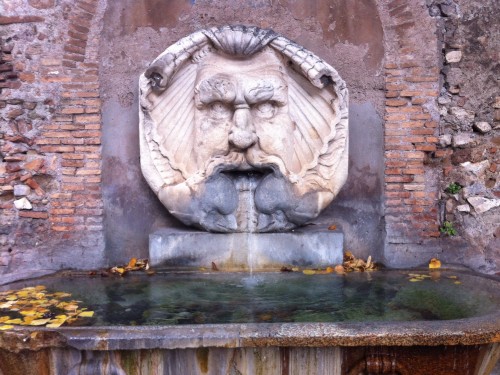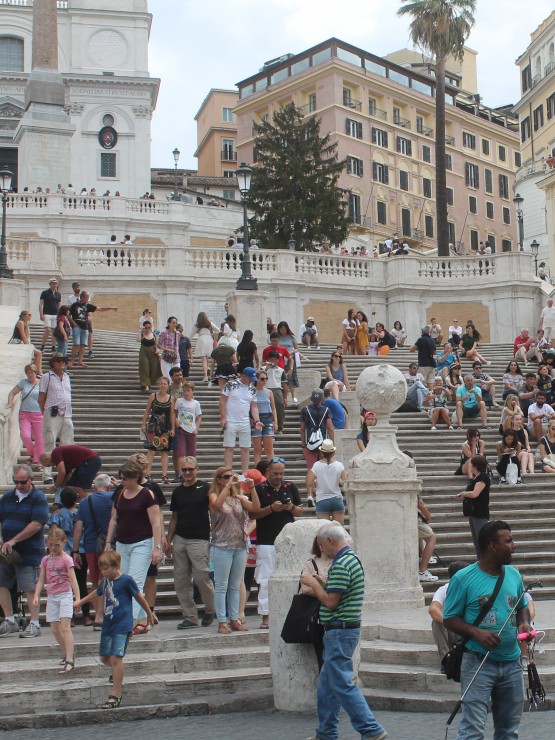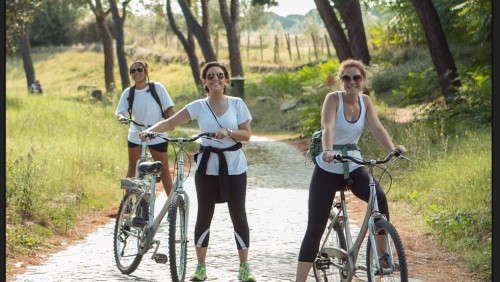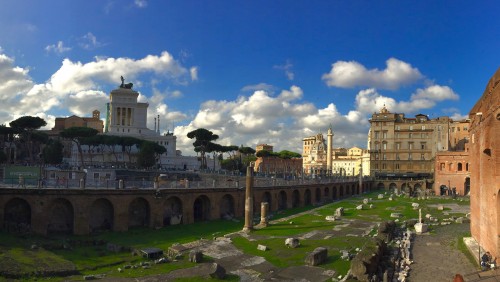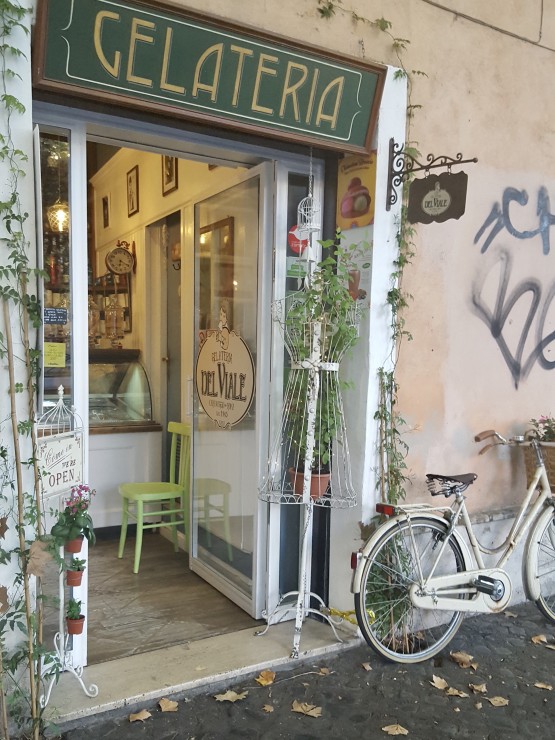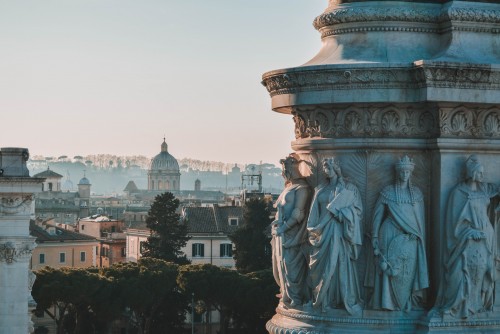Many Kenyon students find off-campus study a vibrant — and often life-changing — experience regardless of their destination. But those who choose to study and travel with fellow Kenyon students and professors on one of the College’s own study programs will have an unparalleled experience, finding a rich array of exciting intellectual and cultural adventures designed to integrate meaningfully into Kenyon’s liberal arts curriculum.
The Kenyon-Rome Program offers you the once-in-a-lifetime chance to study Italian art and culture up close, with extended visits to Florence, Naples, Sicily and other cultural centers in Italy. Housed at Accent International’s Rome Study Center in the beautiful Palazzo Banco Santo Spirito, you will seek inspiration from artistic masterpieces and historical sites all around you, with at least as much time spent on site as in the classroom.
The Kenyon-Rome Experience
Study abroad in Rome, a city where ancient meets modern and there is so much to see and do that every day is a new experience. Subject courses taught in English provide an in-depth focus on the city of Rome and give you an extraordinary perspective into Italian history and culture. Classes are small and the faculty instructors are all long-term residents of Rome. With excursions as part of almost every course, historical sites such as the Forum, Piazza Navona, and the Colosseum become your classroom. Practical Italian suited to your level, as well as internships and volunteer activities, provide you with the opportunity to use your vocabulary outside of class and put you in direct contact with the local culture and society.
“Being able to study art in its original location was an incredible experience. It was also refreshing to have professors lecture at us in a setting other than the traditional classroom.”
Program Details
(REQUIRED) ARHS 242: Eternal Glories: Monuments, Museums, and Churches of Rome
Taught by Assistant Professor of Art History, Katherine Calvin
This course is offered on the Kenyon-Rome program. This course provides an overview of the history, culture and art of Rome from antiquity to the 18th century, with some forays into modern Rome. Classroom instruction complements visits to different sites in the city of Rome and its environs, Florence, Naples and Pompeii. Guest lectures focus on specific issues in ancient, medieval, Renaissance, Baroque and modern art and architecture in Rome. We examine the formation of great art collections like those of the Borghese Gallery, the Vatican Museums and the Capitoline collections. Students are expected to write about art from all historical epochs. This counts toward the Europe and Americas place requirement for the major. No prerequisite. Permission of instructor required
(RECOMMENDED) ARHS 375: Michelangelo and His Worlds: Topics in Renaissance and Baroque Art
Taught by Assistant Professor of Art History, Katherine Calvin
This seminar will explore the life and works of famed artist Michelangelo Buonarroti (1475-1564) in the context of Renaissance Rome’s artistic, political, and religious worlds. Although born in Tuscany, Michelangelo spent many years working — sometimes against his will — for popes and other patrons in the Eternal City. Students in this course will study, firsthand, many of the artist’s most influential paintings and sculptures including the Pietà (1498-99); the Sistine Chapel ceiling frescoes (1508-12); and The Last Judgment (1534-41). We will also visit many sites, such as St. Peter’s Basilica, the piazza of the Capitoline Hill, and the Palazzo Farnese that Michelangelo designed in his work as an architect. Other topics to be discussed include Michelangelo’s poetry and his participation in Rome’s radical spiritual cycles; his involvement in archaeological excavations of Roman antiquities; his widespread reputation as a tempestuous “genius” artist; and, lastly, his influence on developments in Mannerist and Baroque art in Rome and beyond.
This course counts toward the Europe and Americas place requirement for the major. No prerequisite. Instructor permission required.
(REQUIRED) Beginner Italian Course 0.420 units
(Intermediate/advanced available on request)
This course provides students with a sound basis for communicating effectively and accurately in oral and written Italian. Students are required to make use of newly learned grammatical skills to interact with Italian university students in conversation encounters and cultural tours.
Authentic materials are used in a communicative-based approach, and emphasis is placed on the four skills of listening, speaking, reading and writing. The course is conducted entirely in Italian.
Elective courses offered by the University of California Education Abroad Program. Each UC course is worth the equivalent of .420 Kenyon units. Kenyon students are required to take at least one of the following courses if they are taking both Kenyon courses. If they are taking only one Kenyon course, they are required to take at least two of the following courses.
Please note that this list is not final, and courses may be subject to change based on enrollment.
Sociology of Rome (Sociology)
Cosa Nostra: A Comparative Study of Crime and Deviance in the Italian Context (Sociology)
Intersections between Race, Gender, and Class in Italy (Sociology)
Ancient Romans at Work and Play: Reconstructing the Past (History)
Rome Theater of the World: The Early Modern City in a Global Perspective (Art History)
On Location: A History of Italian Film in Rome (Film)
Media and Migration in Times of European Crisis (Sociology)
News and Fake News in Italy: From the Great Fire of Rome to the COVID-19 Pandemic (Sociology)
Student Apartments
Students stay in double/triple rooms in apartments around the center of Rome, with commutes of less than one hour by walking or bus. Each bedroom is furnished with beds, a closet or armoire, and linens. Kitchen facilities include a stove, refrigerator, cooking utensils, and dishes. Kitchen and bathroom facilities are shared by everyone in the apartment.
Homestays
Students who choose a homestay in Rome live with carefully selected host families. Homestay accommodations provide students with an opportunity to observe firsthand how Italians live, and allow them to become more fully immersed in the language and culture of Italy. Students are placed in double and single rooms in homes within the Rome city limits, with varying commutes to classes of 15 to 55 minutes by walking, bus, and metro. Ideally students considering homestays will have previous knowledge of the Italian language to participate in basic conversations.
A series of free and inexpensive activities is available to all students at the Rome Study Center, including a number of events that are planned along with students from La Sapienza University in Rome. Past students have found these events to be a highlight of the semester, both for the opportunity to practice Italian and also expand a local social network in Rome. In past semesters, activities have included:
• Contemporary Italian literature book club
• Italian cuisine series: tiramisu tasting, Neapolitan pizza in the university neighborhood, and aperitivo
• Cineforum: film screening and debate with local students
• Arteinbottega: Informal art workshop in Testaccio neighborhood
The Rome Study Center has a variety of volunteer opportunities in all areas of interest. Past students have found their volunteer post to not only be a great resume builder, but to provide a social and professional network for their semester in Rome and long after. Past opportunities have included:
• Refugee Center: English tutoring, administration of refugee sports leagues, as well as office support in marketing and social media
• NGO for Hunger and Homelessness: Food distribution with local volunteers at weekly breakfasts in Trastevere and dinners near Piazza di Spagna
• Italian Elementary School: students work as conversation partners in a public elementary school
• Jewish Cultural Center: students assist Italian children with their homework and work together with other staff members on sports and games activities
Students participating in the Kenyon-Rome program pay Kenyon tuition, room and board to Kenyon. These fees cover program tuition, room, meal stipend, metro/bus pass and all co-curricular travel. A non-refundable $500 deposit is due approximately two weeks after acceptance by Kenyon into the program.
Kenyon provides a meal credit to each participant, added as a credit to their Kenyon bill. Students participating in homestays providing meals will have the stipend lowered accordingly.
Expenses for which the individual is responsible include transatlantic transportation, books, personal living expenses (laundry, mail, printing), food expenses beyond the meal stipend, and personal travel expenses.
For the purpose of scholarships and loans, Kenyon-Rome students are considered full-time Kenyon students. Kenyon financial aid is automatically transferable to the Kenyon- Rome program. Students should contact the Center for Global Engagement for detailed information on how their financial aid package will be applied towards program payments.
The ACCENT Rome Study Center is located in the beautiful Palazzo Banco S. Spirito on the Piazza dell’Orologio, which is marked by the impressive clock tower by Borromini and is considered the very heart of Rome. Among the historical palaces of Piazza dell’Orologio is the famous Casa delle Letterature or Biblioteca dell’Orologio, which is the home of literature in the “Eternal City.” ACCENT’s central location makes it an ideal base for classes and as a jumping-off point for on-site study visits.
Rome’s rich history inspired its nickname — the Eternal City — yet modern residents keep the atmosphere vibrant. Here students will find inspiring art like the Colosseum, the Sistine Chapel, and the Pietà, intermingled with thriving studios and artists. Italy’s capital is also the hub for government, religion, and education, with nearly 3 million residents calling Rome home. Classes are held in the center of Rome, but frequently leave the classroom to integrate studies with visits to masterworks and the settings that inspired them. Outside of class, students are invited to experience la dolce vita, relaxing with friends and savoring the sights, smells and tastes that make up Rome.
Katherine Calvin is an assistant professor of art history at Kenyon College. Her research and teaching areas include early modern art and visual culture; the history of museums and the art market; and cross-cultural exchange between Europe, the Middle East and Africa. In her current work, she uses feminist methods and critical race theory to interrogate questions of value, both aesthetic and financial, in relation to early modern antiquarianism, print culture, and imperial mercantile networks connecting the Eastern Mediterranean and Europe with West Africa and the Caribbean. She is particularly interested in the patronage and collecting activities of individuals associated with British early modern merchant companies.
Related News Stories
Daniel Weiss '24 reflects on a semester on the Kenyon-Rome program.
Snapshots from Kenyon-Rome Fall 2022
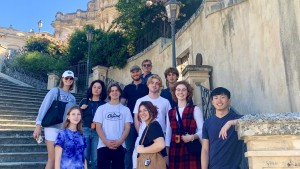
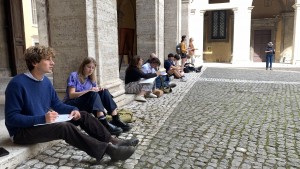
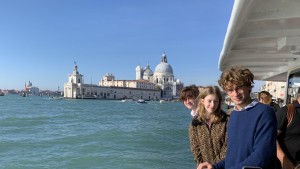
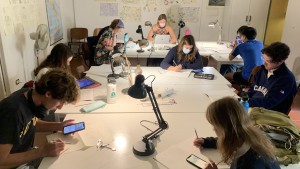
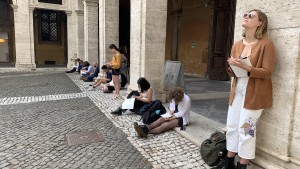
"If you love the idea of walking in the rain along cobblestone streets at night, Rome's lights glowing all around you as you pass monument after monument, you will love Kenyon Rome. Expect to put in some effort, but know there will be time to explore and experience as much of the culture as you are willing to put yourself out."
